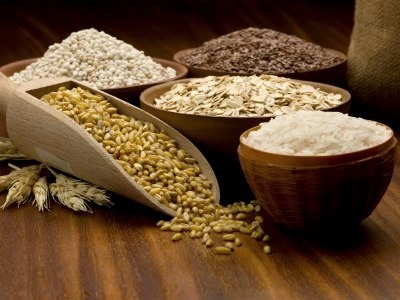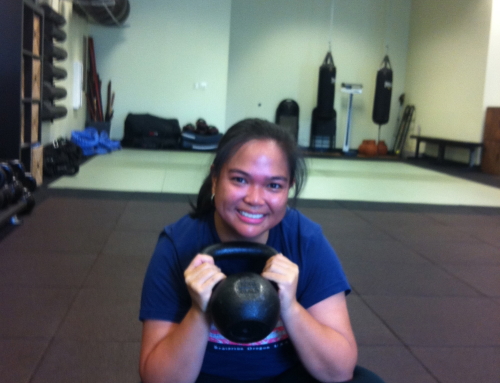When insulin comes up it is usually in reference to diabetes. Understanding the function of insulin is important for anyone eating a Western Diet who wants to achieve and maintain ideal body weight, general health, or improve athletic performance.
When we exercise our muscles use stored glycogen as fuel. We store between 300 and 400 grams of glycogen in our muscles and another
70 to 100 grams in our liver. The glycogen in our liver burns quicker during low intensity exercise and the glycogen in our muscles burns quicker during high intensity exercise.
Our bodies break down carbohydrates into sugars. These sugars are converted to glucose to be used as energy in the body. When more glucose is available then what is needed the excess is returned to the muscles and liver to replace the depleted glycogen supplies. Glycogen is the stored form of glucose. However, excess glucose is toxic, so insulin is released to transport glucose to the liver for conversion into triglycerides that are then sent to fat cells for storage.[ii]
Because insulin release is associated with having excess energy on hand, the presence of insulin signals the fat cells to not release energy. Over time the muscles and liver receptors become desensitized to the high levels of insulin and the person becomes insulin resistant leading to a predictable chain of obesity, diabetes, heart attack, blindness, and limb amputation.[iii]
The rate at which a food raises the blood sugar and triggers an insulin response is recorded in the glycemic index.[iv] Fiber helps regulate the rate of digestion and therefore blood-sugar, so foods with higher fiber have a lower insulin response.[v] This is one of the reasons grains are so bad for us. We cannot digest grain in its natural raw state so we grind it down, or otherwise prepare it, in order to consume it. In this process we reduce the fiber, then we ingest the grains (say, in the form of bread, crackers, pasta, etc) and our blood sugar, hence our insulin, spikes.
The glycemic index scores foods in relation to glucose based on 50 grams of carbohydrate. The problem with this is it does not consider normal serving sizes. So based on the glycemic index milk chocolate (43) has a lower score then watermelon (72), but these scores are actually comparing 3 ounces of chocolate to 1.5 pounds of watermelon. So the glycemic load was developed to give a more accurate comparison by scoring foods based on normal serving sizes.[vi]
The best time to eat carbohydrates are the two hours immediately following exercise when your glycogen stores are depleted. If you are trying to reduce body fat your daily carbohydrate intake should be limited to 100 grams per day. If you are simply trying to maintain your optimum weight your daily limit should be 150 grams of carbs per day. If you are following the three low days, one high day protocol your low days should be restricted to 100 grams per day and your high days should be limited to 300 grams per day.
One hundred grams a day? Where do I get the rest of my food from? Your daily minimum protein requirement is found by multiplying .7 times your lean body mass (total weight minus your fat weight). The rest can come from additional protein or fat. That’s right I said fat is ok – under the right conditions.
A complete discussion of fat is beyond the scope of this article. However, most studies fail to distinguish fat consumed in the absence of insulin and fat consumed in the presence of insulin. We already know that when insulin is present excess glucose is transported to the liver, converted to triglycerides, and stored as fat. But what happens in the absence of insulin? In the absence of insulin ketosis occurs and the excess energy is discarded as waste.[vii]
Remember vegetables and fruits are also primarily carbohydrates, however the natural fiber present lowers their glycemic load making them a much better energy choice then starchy carbohydrates. They still count toward your daily limit but you get to eat a whole lot more of them.
[i] Sherman, W.M., G.S. Wimer. Insufficient carbohydrate during training: Does it impair sports performance? Sports Nutrition 1(1):28-44. 1991. [ii] Whitney, E.N., Rolfes, S.R., Understanding Nutrition. St Paul, MN: West Publishing, 1996. [iii] Shepard, P.R., Kahn, B.B. Glucose transporters and insulin action – implications for insulin resistance and diabetes mellitus. New England Journal of Medicine. 341(4):248-258. 1999. [iv] Jarvi, A.V., Karlstrom, B.E., Granfeldt, Y.E., Bjorck, I.M.,Vessby, B.O., The influence of food structure on postprandial metabolism in patients with non-insulin dependent diabetes mellitus. American Journal of Clinical Nutrition, 61(4):837-842. 1995. [v] Anderson, J.W., Smith, B.M., Gustafson, N.J., Health benefits and practical aspects of high-fiber diets. American Journal of Clinical Nutrition. 59(5):1242S-1247S. 1994. [vi] Cordain, L., The Paleo Diet for Athletes. Rodale. pp. 85. 1995. [vii] Wardlaw, G.M., Hampl, J., Perspectives in Nutrition, 7th Edition. Columbus, OH: McGraw-Hill. 2007.Taiso Fitness and Nutrition
If you are looking for a unique gym experience try Taiso Fitness and Nutrition. We are Tacoma’s fitness and nutrition gym for people who want to get out of pain or improve performance, who need immediate, measurable results, and want to make educated decisions to take control of their health.
Ready to get out of pain or improve performance? Looking for a gym, personal trainer, or unique boot camp experience? Set up a complimentary consultation, or start a 21 Day Risk Free Trial. Stay up to date on the latest information through our website at www.taisofitness.com






